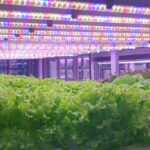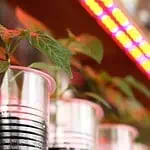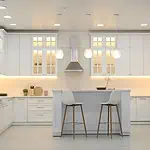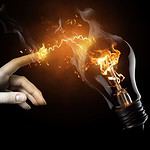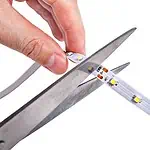LED grow lights are widely used in indoor planting in horticulture. They mimic the natural sunlight, aiding in the usual growth of the plant. However, as these are artificial light sources and have higher light intensity, a common question is whether LED grow lights burn plants.
Like other LED lights, LED grow lights operate at minimum temperatures and are unlikely to burn plants. Yet, improper installation of the fixture can burn plants. For example- fitting the light too close to the plants, using overpowered LEDs, keeping the light on for longer hours than daylighting requirements, etc. Besides, insufficient ventilation, wrong wiring, and overloading of the electrical wires can also burn plants.
Here, plant burning due to LED grow light doesn’t only mean a physical fire breakout. Excessive light exposure can also cause light burns in plants. Go through the full article to clear up the concept:
What Are LED Grow Lights?
LED grow lights are designed to provide artificial lighting to the plants that mimics the wavelength of sunlight. The main purpose of using these lights is to encourage photosynthesis in indoor gardening or horticulture. These fixtures are available in different wavelengths of colors as per different stages of plant growth. For example, blue light spectrums of 400-500 wavelengths are suitable for vegetative stages of plants. Again, for the flowering stage, you will need red spectrum LED grow light with wavelength ranging from 600-700 nm.
These light fixtures are usually used at the industrial level in the food production industry. Besides LED, other lighting technologies like HID, fluorescent, and incandescent lights are also used as grow lights for plants. But LED grow lights are the most popular variant as they can produce the highest Photosynthetically Active Radiation (PAR) of any light. Besides, they are available in different colors; full spectrum lights are also popular as LED grow lights. Above all, LEDs are much more energy efficient than other lighting technologies. To learn more about LED grow light and its mechanism, check this- What Is An LED Grow Light, And How Does It Work?
Do LEDs Grow Light Burn Plants?
LED lights operate at minimal temperatures and have less possibility of overheating. In incandescent and halogen fixtures, 90% of the energy is lost as heat. So, these bulbs have a greater chance of burning plants. On the other hand, LED lights convert about 95% of energy to light, and only 5% is emitted as heat. This makes them work at low temperatures, and thus, they are not likely to burn plants.
Yet, due to low-quality LED fixtures, wrong wiring, or inappropriate installation, LED grow lights can sometimes burn plants. Now, plant burning here doesn’t necessarily mean catching fire. Placing fixtures too close to plants can cause leaf burning and photo-bleaching. So, if you have chosen the right LED to grow light of proper intensity and set it correctly at an appropriate distance, it won’t burn the plant. If not, there are chances to burn.
Situations When LED Grow Lights Can Burn Plants
From the above section, you have learned that LED grow lights have less chance to burn plants; in some cases, they can end up doing so. In this section, I will discuss some situations where LED grow lights might burn plants. Go through the points and make sure to avoid these circumstances to save your plants from burning:
Excessive Light Intensity
Excessive light intensity often leads to increased transpiration, which dehydrates the plant. Besides, it disrupts the plant’s cells and causes leaf burning. This eventually leads to bleaching, browning, or scorching on leaves. Again, different types of plants have different light intensity requirements. For example, using the same light intensity for captivating cacti and winter vegetables like Swiss chard won’t work. Cacti often prefer high light intensity, exceeding 6,000 PAR units or 50,000 lux. Meanwhile, Swiss chards grow well in around 4,000 PAR units or 15,000 lux. So, they can get burned if you use high-intensity light for Swiss chards.
Using Low-Quality Grow Lights
Low-quality LED grow lights have cheap divers, LED chips, and heat sinks. Using such fixtures doesn’t give off the desired lighting, as they claim. Plant growth highly depends on the light spectrum and wavelength. Growth can be interrupted if plants are not getting the appropriate wavelength. Besides, the fixture gets overheated due to the poor heat sink system, which can eventually burn the plants.
Placing The Fixture Too Close To The Plants
LED grow lights are designed to mimic sunlight. As you minimize the distance between the plant and the fixture, the intensity of light increases. And when they are placed too close to the plants, it is quite natural that they will burn them out. Plants with thin leaves and those that lack wax coating on the leaves are more likely to burn out due to light placement that is too close.
Incorrect Electrical Wiring
While installing LED grow lights, you can mess up with the wiring, which can lead to a fire breakout. If you notice any flickering issues in your fixture, take it under consideration and fix it ASAP. Besides, darkening or gradual dimming of the fixture can also indicate faulty wiring. You should instantly fix electrical wiring to avoid accidents. Here are some reasons related to LED grow light wiring that can end up with a fire breakout in your gardening room:
- Cutting Wires Too Short
If the wires of LED grow lights are too short, tension will build up. This can tear the cables, leading to a fire breakout. Therefore, it is important to measure the wire properly to avoid keeping it too short.
- Unprotected Wire
If the wire is too long and hanging here and there, it can also lead to unexpected accidents. So, better use clips or clamps to give your wire a compact and neat look. This will ensure the wires are not in the ground but instead are securely placed. Thus, you can also prevent short circuits and arcing.
- Inappropriate Amperage and Wattage
LED grow lights come in different amps and watts. You will have to buy them as per the plant’s requirements. However, if the wires and circuits of the cultivating room can’t handle the wattage of the LED grow lights, it can cause a short circuit. So, before wiring, you must match the fixture’s wattage to your room’s power supply. Consult a professional electrical engineer to rewire the space if they don’t match.
Overlapping of LED Grow Lights
While indoor planting, you must consider the number of lights you use. If you have a small room, consider fewer lights. Overlaying too much light will increase the room’s temperature, negatively impacting the plant’s growth rather than just burning it. For instance, transpiration will increase with increased heat, and the plant will face more water loss. You can notice the changes in your plants’ color to identify if they are going through overheating issues.
Overexposure During Seedlings or Young Plants
The seedling stage of the plant requires minimal exposure to light. The light intensity at early stages should be minimal. This is the period when the seed germinates and roots and stems develop. If you use high-intensity lights and keep them on for long hours, there is a chance to burn the plans. For example, most seedlings prefer 16 hours of light exposure for germination. But if you expose them for more than this duration, they can burn.
Overloading of Electrical Circuit
The hobbyist planters often don’t care much about using the power wiring and power connection. They often end up connecting too many wirings in a single plugin. This overloads the circuit, causing fire breakouts.
Having Flammable Objects In Growing Area
The fertilizers, pesticides, or other liquids used in cultivation can create flammable vapors. Besides, having papers, fabrics, or other flammable substances around the fixture is also risky. When the LED grow lights overheat and come in contact with these flammable objects, they can catch fire, burning the plants.
Insufficient Ventilation and Heat Dissipation
Though LED lights operate at low temperatures, they produce heat. As in indoor planting, they remain congested, and the room temperature increases fast. Due to a lack of proper ventilation, the heat produced by the light fixture can disperse. As a result, the fixtures get overheated and can cause a fire breakout.
How Do You Prevent LED Grow Light From Burning Plants?
Below, you have learned the reasons that can cause LED grow lights to burn plants. Now, I will tell you the precautions or the measures to take to prevent plant burning due to LED grow lights:
Ensure Proper Ventilation & Heat Dispersion System
While purchasing LED grow lights, remember they have a proper heat sink installed. This will maintain the cool operation of the LEDs, preventing overheating. Besides, you must ensure the planting room is well-ventilated. There should be sufficient airflow systems that will keep the room’s temperature normal. So, if the fixture emits more heat, it will not remain confined within the room. Due to adequate ventilation, the heat will pass out, preventing the burning of plants.
Use High-Quality Grow Light and Fixture
Buying cheap LED grow lights can increase the risk of the plant burning as they use poor-quality LED chips and other composting materials. This is why you should always go for reputed brands with expertise in LED grow light manufacturing. The fixtures from these brands have well-binned LEDs and high-quality materials. Besides, the heat sink used in good quality bulbs doesn’t let the fixture get overheated, harming the plants. But where do you find top-notch LED grow lights? No worries, go through this suggestion- Top 10 LED Grow Light Manufacturers/Suppliers In The World (2024)
Consider The PPFD Value
Regarding light intensity requirements for plants, PPFD gives more accuracy than Lux. PPFD stands for Photosynthetic Photon Flux Density, which measures the amount of light reaching the crop canopy in the PAR zone. The required PPFD of plants can range from 100 to 1,000 μmol/m2/s based on the plant’s growth stage. So, if you don’t want your plants to burn due to excessive light intensity, follow the below chart during cultivation:
| Plants Growth Stages | Suggested PPFD |
| Seedling Stage | 100 – 300 μmol/m2/s |
| Vegetative Stage | 400 – 600 μmol/m2/s |
| Flowering Stage | 800 – 1,000 μmol/m2/s |
Maintain Proper Distance Between The Light & Plants
The lighting requirement and distance of light placement differ for different stages. This is why different rooms are used for plants’ germinating and growing stages in industrial-level production. If you are doing horticulture or indoor planting as a hobbyist, use portable and dimmable LED grow lights. Using this light, you can increase or decrease the lighting distance for different growth stages of plants. Below, I’m adding the suggested distance between the LED grow light and the plant for different planting stages:
| Planting Stage | Distance Between LED Grow Light & Plant |
| Seedling Stage | 24-36 inches from the top of the soil |
| Vegetative Stage | 12-24 inches |
| Flowering And Fruiting Stage | 16-36 inches from the plant canopy |
NB: The recommended spacing between plants and LED grow lights can vary based on the fixture’s size and the intensity of light.
Consider Plant-Specific Requirements
Summer plants need more daylight than winter plants. Again, the lighting horse varies for flowers, vegetables, and herbs. So, when you use LED grow lights for indoor gardening, you can’t turn them on for 24 hours. These fixtures provide them with artificial lighting, replacing sunlight that influences sunlight. So, you also need to turn them on to make them feel the nighttime and stop photosynthesis. Besides, keeping them on all day will also increase the room’s temperature, increasing the chances of plant burning. Therefore, you should maintain the light hours of your LED grow lights per the plant’s requirement. Here, I’m adding a chart to help you understand how long you will need to keep the LED grow light on for varying plant types:
| Type Of Plant | Required Lighting Hours | Wattage | Example |
| Vegetables | 16-18 hours | 25-50 W/ft² | Tomatoes, peppers, and cucumbers |
| Herbs | 14-16 hours(Full sun plants) | 30-40 W/ft² | basil and rosemary |
| 10-12 hours(Low light plants) | 20-30 W/ft² | parsley and mint | |
| Flowers | 8-16 hours(Depending on variety) | 15-50 W/ft² (Depending on variety) | African violets (partial shade), orchids (bright light) |
| Houseplants | 8-12 hours (Low Light) | 15-20 W/ft² | Snake plant, ZZ plant, pothos, philodendron |
| 12-14 hours(Medium Light) | 20-30 W/ft² | Spider plant, peace lily, dracaena, jade plant | |
| 14-16 hours (Bright Light) | 30-40 W/ft² | String of pearls, succulents, cacti, citrus trees |
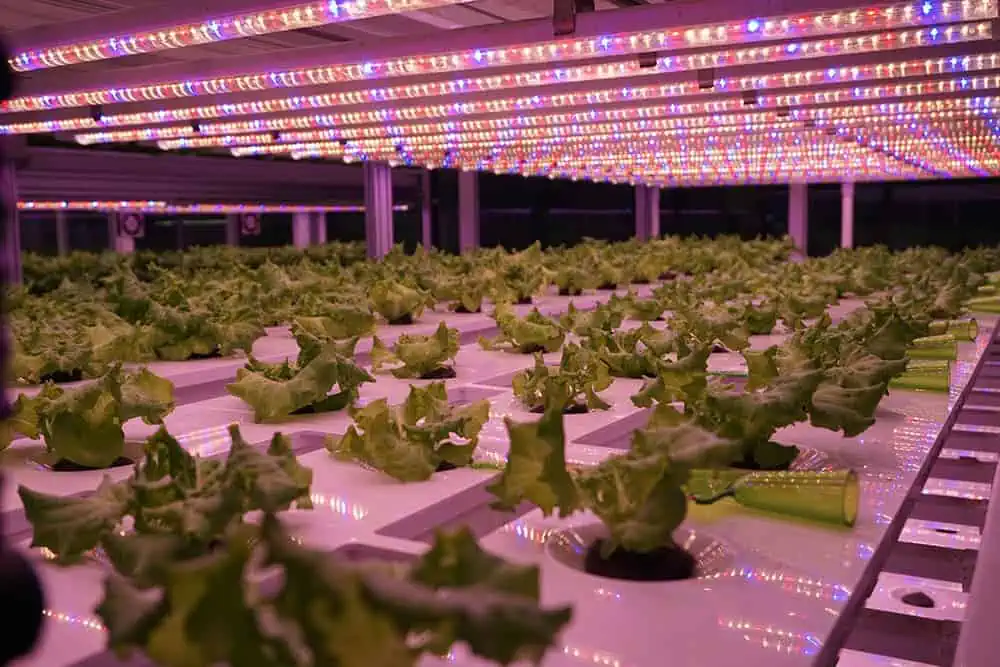
Monitor The Temperature Regularly
Keeping the appropriate temperature in the gardening or cultivating room is essential to prevent plant burn. LED lights have a specific operating temperature. When the temperature of the room reaches too high, it can disrupt the LED’s performance, increasing the chances of plant burning. So, it is essential to monitor the temperature of the room regularly. For this, you can use a thermometer and a hygrometer. Aim for a temperature range of 65-80°F (18-27°C) and humidity around 40-60%, though this may vary for different plan types.
To maintain this temperature, you can use cooling systems that consider your region’s climate. For instance, keep a sufficient ventilation system in your garden room. You can use exhaust fans to remove the hot air from the room and allow cool air to enter the space. Again, you can also use an air conditioner for strict temperature maintenance. However, using AC will be expensive. In this case, you can use evaporative cools as a cost-effective option. But the disadvantage is that you can use evaporated coolers only in dry climates.
Again, if you are planting indoors in cool regions where the temperature falls to minus, you must use a heater. Using a heater in the room is also very risky. And if the temperature gets too hot, it can directly burn the plant. Besides, it can heat up the LED grow lights, affecting their normal operating system and leading to firing.
Use Junction Box For Wiring
Overloading the electrical wire or a wrong wire connection in LED grow lights can cause plant burning. To prevent this, you should use a junction box for wiring. This will protect the hub of wires in a circuit. So, when installing LED grow lights, tell your electrician to use a junction box.
Take Precautions To Stop Fire Breakout
Even after taking all the above measures, LED grow lights might burn plants due to accidents. This is why it is better to take essential measures to take action by changing fire breakouts in your gardening room. Here is what you should have:
Install a smoke alarm: A fire breakout can occur at any time, and it is not always possible to monitor the garden manually 24/7. That is why you should install a smoke alarm. If the cultivation space catches fire, the alarm will ring, and you can take action to save your plants from burning.
Fire extinguisher: You should also install a fire extinguisher to stop the fire from spreading. The agents in the fire extinguisher quickly spread carbon dioxide that stops the fire. This will help you control small fires that break out immediately, preventing further plant burning.
Buy a sprinkler system: If you have an industrial-level growing project, a sprinkler system can help you shut down a fire. Having this will give you quick access to a well-set water setting to spray over the fire brakouting area.
Use a fire-resistant door: For advanced protection, use a fire-resistant door. These doors are made of glass, steel, metal, and timber. Using these doors in your planting room will prevent fire from spreading.
Light Burn Vs. Nutrient Burn
Both light burn and nutrient burn have a negative impact on plant growth. Light burn occurs due to excessive light exposure, whereas excessive nutrient content in soil causes nutrient burn. Due to the presence of extensive nutrients in the soil, the plants don’t get sufficient water. The nutrient particles in the soil block water, not letting them reach the transportation cycle. This is why nutrient burn occurs.
The leaves of the plant discolor in both nutrient and light burn cases. This is the only visible symptom in the initial stage, making distinguishing between light and nutrient burn tricky. However, you should consider the direction of color changes in leaves to identify whether it’s a nutrient or light burn.
As light burn is caused due to excessive light, the leaves of the upper portions are affected at first. You will find the tip of the leaves of the upper part of the plants are getting yellowing. And it gradually flows downward. In contrast, as nutrients burn details with soil, the leaves of the lower portion of the plants are affected in the forest, and they spread upward. Below I’m adding a comparison chart to help you find the differences:
| Criteria | Light Burn | Nutrient Burn |
| Cause | Excessive light exposure | The presence of excess nutrients in the soil |
| Symptoms | Leaves get yellow starting from the tip | The color of the leaves starts getting yellowish or brownish from the tip |
| Direction of color discoloration in plant | Top to bottom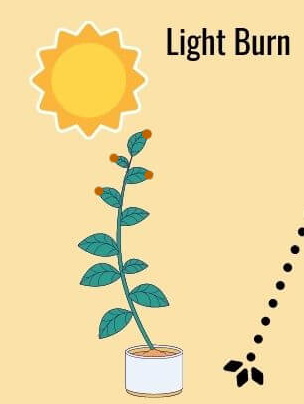 | Bottom to Top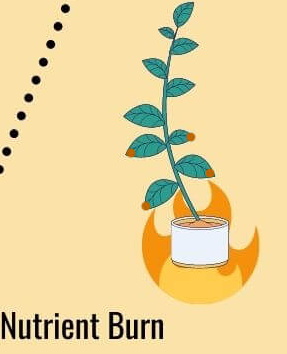 |
How Will You Identify If Your Plants Are Burnt Due To Excessive Light?
It’s not always the fact that the plants will catch physical firing due to LED grow lights. For excessive light intensity, plants can get burnt. Here are the symptoms that will help you to identify that the plants are being affected due to lighting issues-
Yellow Leaves
The primary symptom of plant burning is visible color changes in the leaves. The tip of the leaves begins to turn yellow, which spreads throughout the leaves. However, the veins of the leaves will remain green; they won’t turn yellow. This usually happens on the leaves of the upper section of the plant and gradually goes down. If you notice such yellowing incidents in your leaves, consider whether they are being overexposed to lighting.
Bleached Buds
Excessive exposure to light can bleach buds in flowering plants. You may find the buds benignly discolored or whitish. An overpowered LED can cause this to grow light or turn the light on for too long compared to the daylight requirement.
Leaf Curling or Pointing Upwards
Sometimes, the leaves may get curled or point upward due to overexposure to light. This is a very rare symptom to identify plant burn. Yet, if you find the leaves more erect or curled than usual, check whether everything is going okay.
Stunted Growth
Due to plant burn, the plant’s natural growth is hampered. You may find the leaves shorter than the usual length. Not just leaves but the overall growth of the plant will be affected. However, stunted growth doesn’t necessarily mean the plant is burnt. This usually occurs due to nutrient deficiency, yet you should check on the lighting.
Discolored Leaves Don’t Fall Easily
As the leaves turn yellow, you may think they will soon fall. In natural cases, when the leaves get older, their naturals turn pale yellow and fall off. But leaves that get yellow due to plant burn don’t fall off easily. If they fall easily, it could be due to nutrient defects, not plant burns.
How To Fix A Burnt Plant?
You need to minimize the light exposure to fix plant burn. By reducing the light intensity, the plant will gradually recover and come back to its normal stage. Here is what you can do for this:
- Adjustment of Light Fixture
As intensive lighting causes light to burn, the best solution to fix it is by either decreasing the light intensity or increasing the distance between the light and the plant. If you have enough space in your planting room, you can quickly adjust the fixtures by placing them at a distance. But what about light intensity?
While purchasing LED grow lights for your plant, consider the stage and type of your crop/plant. Every plant has its own lighting requirements. So, give them the needed light intensity for optimal growth. Besides, many LED grow light manufacturers give you guidance for the distance of light placement. You should follow the specifications and install the fixture as per the guidance. If you can’t decide on the proper lighting, consult an expert.
- Low-stress Training
As plants grow, they tend to come closer to the light source. You can adjust the light fixture’s distance if you have ample space with a high ceiling. But what if there is no space to do so? Low-stressing training for plants can be useful in this case. In this method, the stems of the plants are bent to control their height in limited space. Thus, you can direct the plant’s growth to some other direction where the exposure to light is minimal. However, this process is not so ideal as bending the stamps is not applicable for all types of plants. Besides, it can also cause harm to the plant while doing this process.
FAQs
LED grow lights are safe for plants and have minimal chances to burn plants. But in some circumstances, like installing the fixture too close to the plant, using low-quality fixtures, wrong writing, etc., can burn plants under LED grow lights.
While installing LED grow lights, you must consider their brightness and placement distance. Using a high-power LED for plants that need minimal light exposure to grow can damage the plant with severe light burn issues. Again, installing the LEDs too close to the plant will create stress on the plant. Besides, different plants have different daylight requirements. If you keep the lights on for longer hours while cultivating short-day-length plants, it can damage them.
The distance between the plants and the LED grow light depends on the type of plant and its growth stage. Usually, for the seedling stage of most of the plant, you should install the fixture 24-36 inches away from the soil top. Again, 12-24 inches would be enough for the vegetative stage. If your plants are flowering and fruiting, install the LED grow light 16-36 inches apart from the plant canopy.
Check on the leaf color to identify if grow lights are burning plants. The tip of the leaves tends to get yellowish due to plant uring. If you notice the leaves of the upper portion of the plants are gradually getting yellowish, it can be due to plant burning. Besides bleaching or discoloration of buds, stunted growth can also be caused by plan burn.
Whether the light overheats or not depends on the lighting technology. They can be fluorescent, HID, or LED grow light. Comparing these technologies, LED grow lights operate at minimum temperatures and have less tendency to overheat. But other technologies can get overheated quickly.
Light burn turns the green leaves of the plants to yellow. However, the veins of the leaves still remain green. This color change starts from the tip of the leaves and spreads through the entire leaves.
LED grow lights are used as an alternative to sunlight. For the natural growth of plants, they need both light and dark phases. If you keep the LED grow lights on for 24 hours, the plants won’t get any dark phases where they stop the photosynthesis process. Thus, photosynthesis will continue all day long, which is not a natural cycle. So, you should not leave the LED grow lights on for 24 hours. Instead, learn about the dark and light hours of specific plants and turn lights on and off accordingly.
300W LEDs are used for seedlings and young plants. 12-18 inches distance between the plant and the fixture is enough for healthy growth.
Of course, too much light affects plants. Due to excessive light exposure, the chlorophyll of the plants is broken. This damage leads to the pailing of leaves and buds, which eventually become brown and brittle.
If you identify light burn issues at an early stage and take action against them, plants can recover from the damage. But when the burning becomes so severe, bringing the plant back to its normal form is difficult.
Conclusion
LED grow lights are the best choice as an artificial light source for plants or indoor gardening. They are about 85% more energy efficient than traditional light technology. Besides, LED grow lights don’t overheat, which causes a major risk of plant burning. These facts make LED grow lights a safe choice for horticulture and industrial-level indoor cultivation.
However, using poor-quality LED grow that has cheap LED chips and a poor heat dispersion system can cause plant burning. Besides, using LED grow lights of higher intensity than the requirement will burn the plant. It’s not only the fault of the light fixture and installation process; the surrounding environment of the gardening area also matters.
For instance, you should not have flammable objects close to the light fixture. The room’s ventilation system should be sufficient to pass out the hot air outside the room. Apart from all these, you must always consider specific plant needs to give them a correct light setting. Thus, you can prevent plant burning and ensure normal plant growth.
